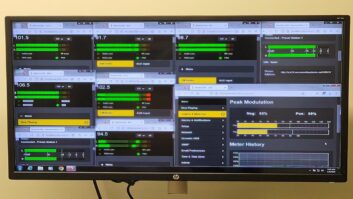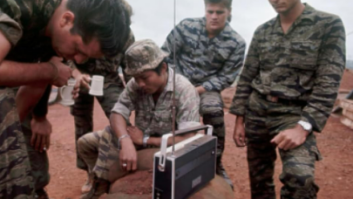MONTREAL — Espace Musique, the music channel of Canadian francophone public-service broadcaster Radio-Canada, is outfitting its network of stations with RBDS data services.
Espace Musique has installed C02 RBDS encoders from manufacturer 2wcom at 39 stations in Canada, significantly expanding the network’s use of RBDS “without making a major investment,” according to Charles Rousseau, an engineer in the Radio-Canada Spectrum Engineering department.

C02 RDS/RBDS Encoder The Radio Broadcast Data System, or RBDS, is the North American implementation of the FM Radio Data System, or RDS. Both systems use the 57 kHz subcarrier of an FM signal to carry a variety of data services.
Although the majority of Espace Musique outlets operate in Quebec, New Brunswick and Ontario, it has outlets in all 10 Canadian provinces. “The C02 with its multiport solution offers an extremely flexible concept,” said 2wcom CEO Werner Drews. “Five different services can be managed by a single encoder via five independent IP ports, either TCP or UDP.”
Monitoring
For monitoring purposes, 2wcom A20 measuring and monitoring decoders have been installed within each of Radio-Canada station’s signal footprints. The A20 is self-sufficient, said Drews. “If any irregularity occurs within the network, the A20 alerts and reports the problem immediately and automatically via SNMP before the audience even notices it.”
The decoders connect back to Radio-Canada’s engineering department via TCP/IP connections, and, said Drews, “Optional MP3 live streaming allows users to monitor the audio received by an A20 from anywhere for signal-quality checks.”
Not surprisingly, Radio-Canada is using its new RBDS service to deliver artist and song names to its listeners’ RBDS-enabled receivers. But the system also supports a Traffic Message Channel to provide listeners with on-screen traffic information, an emergency warning system for real-time weather and other alerts, as well as other forms of datacasting as they become available.
The system also supports PI codes, and each station on the network has its own. The code allows the RBDS receiver to “know” where it is getting its signal from. Besides providing this data, PI codes make it possible for RBDS-capable car radios to switch automatically from a fading Espace Musique signal to a stronger signal that is coming into range.
“As far as the listener is concerned, there is no switchover; it is seamless coverage,” says Rousseau. “In reality, the receiver has made the switch in the background. For instance, if you are driving from Quebec City to Montreal, your car radio will tune to whichever of these two signals is more powerful.”
By adding the 2wcom RBDS system to its Espace Musique network — “it only consumes a bit of bandwidth, but delivers a lot of value,” Rousseau said — Radio-Canada hopes to give its listeners more reasons to tune in.

A20 Monitoring Decoder
The inclusion of local real-time traffic news and emergency warnings should help Espace Musique network stations compete against local talk radio stations. No longer will listeners have to scan elsewhere to find out what’s on the road ahead. Meanwhile, the A20 monitoring system allows Radio-Canada to keep an eye on its RBDS operations without spending more money on human engineers.
“The English equivalent of Espace Musique, CBC Radio 2, is considering adding this system to their transmitters,” Rousseau said.
For information, contact 2wcom; e-mail [email protected] or visit www.2wcom.com.












